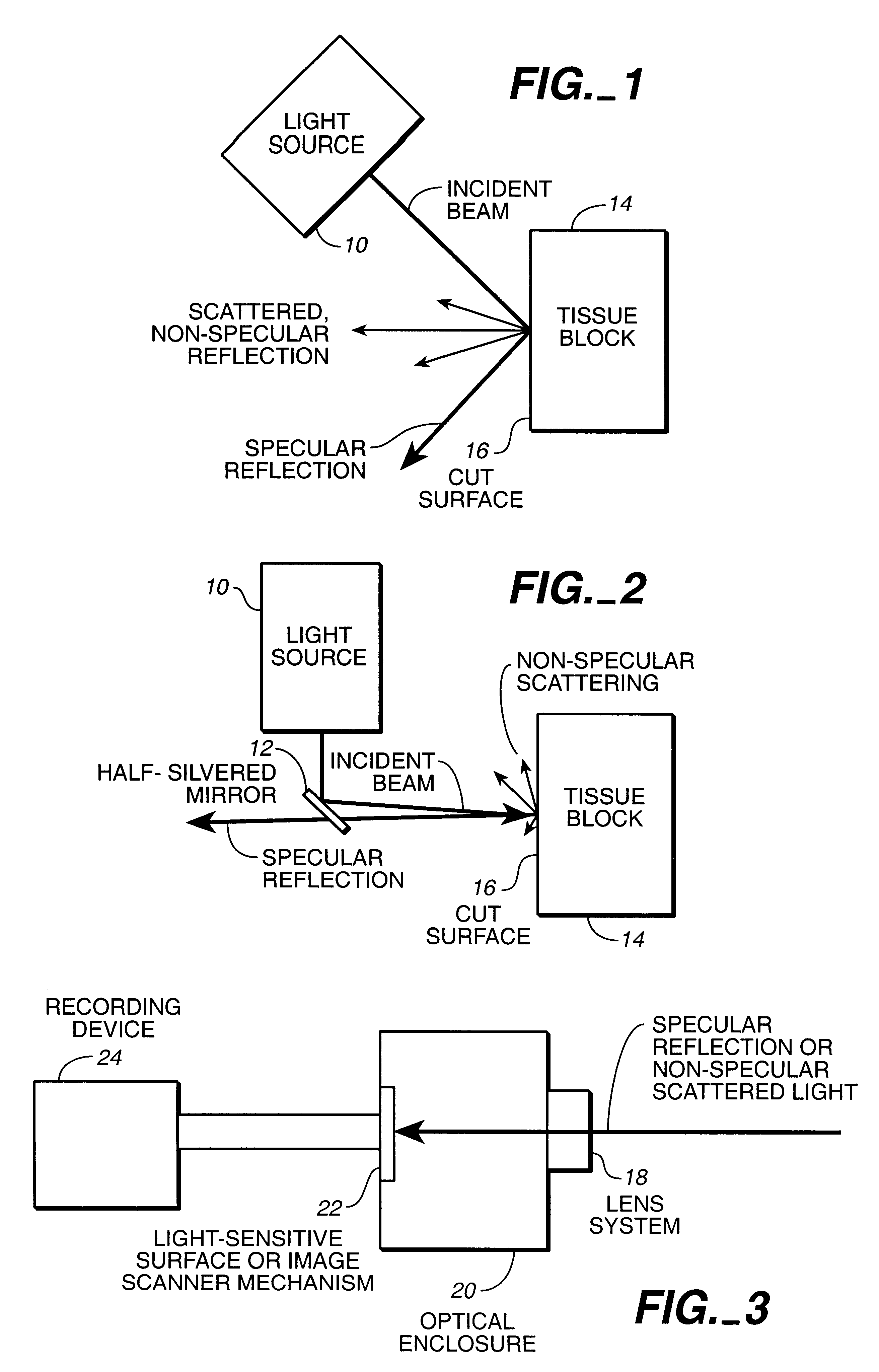Method and apparatus for measurement of microtome performance
a microtome and performance technology, applied in the field of microtome sectioning histology tissue samples, can solve the problems of loss of precision, degrade the quality of histologic sections, and detectable deviations from a perfectly flat surface on the face of the block
- Summary
- Abstract
- Description
- Claims
- Application Information
AI Technical Summary
Problems solved by technology
Method used
Image
Examples
Embodiment Construction
FIG. 1 is a schematic view of that part of the present invention for producing an image from the cut surface of a tissue sample histology block, illustrating a light source 10 and a tissue block 14, each as well known in the art. Light produced at the light source is directed onto the cut surface 16 of the tissue block, and thereafter from the cut face of the tissue block in a specular and / or non-specular manner.
FIG. 2 illustrates the preferred configuration depicting that part of the present invention for producing an image from the cut surface of a tissue sample histology block as more generally illustrated in FIG. 1. FIG. 2 depicts the specular image capture mode, illustrating a light source 10, partially reflective mirror 12, and tissue block 14, all as well known in the art. Light produced at the light source is reflected from the partially reflective mirror 12 onto the cut surface 16 of the tissue block, and thereafter from the cut face of the tissue block in a specular and / or...
PUM
| Property | Measurement | Unit |
|---|---|---|
| length | aaaaa | aaaaa |
| flatness | aaaaa | aaaaa |
| width | aaaaa | aaaaa |
Abstract
Description
Claims
Application Information
 Login to View More
Login to View More - R&D
- Intellectual Property
- Life Sciences
- Materials
- Tech Scout
- Unparalleled Data Quality
- Higher Quality Content
- 60% Fewer Hallucinations
Browse by: Latest US Patents, China's latest patents, Technical Efficacy Thesaurus, Application Domain, Technology Topic, Popular Technical Reports.
© 2025 PatSnap. All rights reserved.Legal|Privacy policy|Modern Slavery Act Transparency Statement|Sitemap|About US| Contact US: help@patsnap.com



